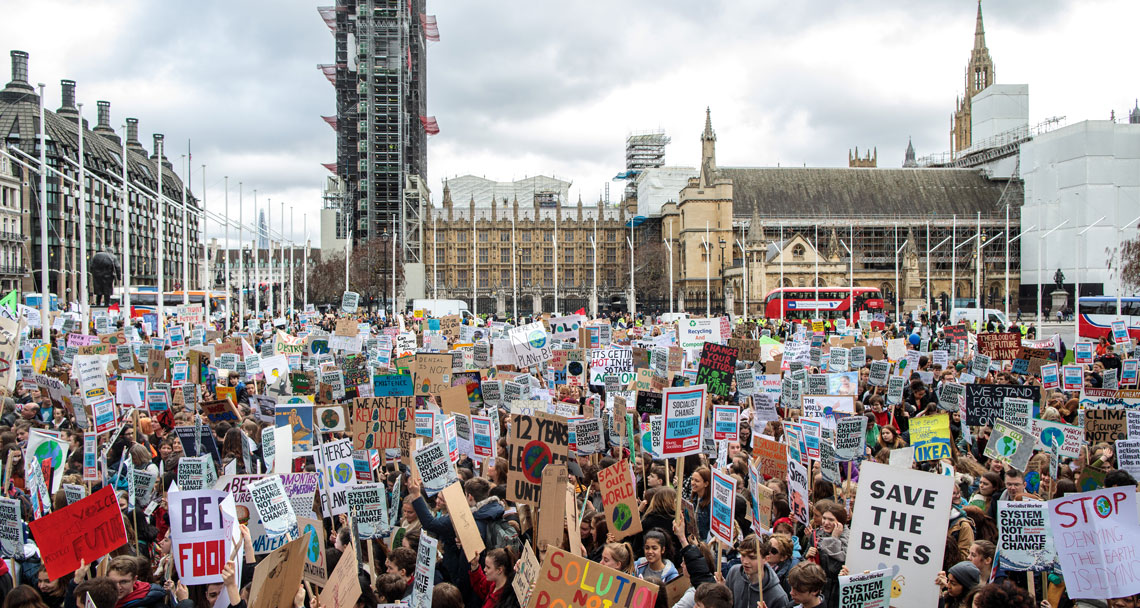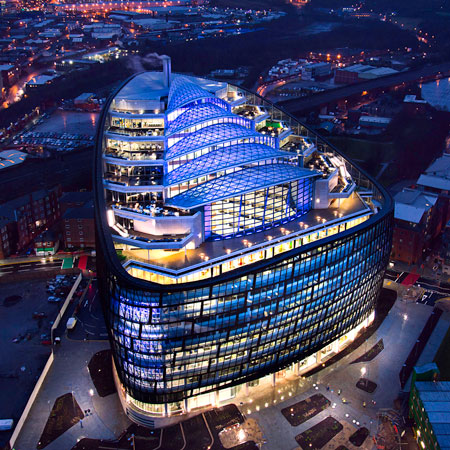For a topic with so much scientific evidence, the progress and consequences of climate change remain controversial. Instead, action has been left to the people. There’s been a social tipping point as schoolchildren and environmental groups have led protests worldwide. Now, those people – and the scientists – are looking to government and industry to be bolder with the measures they are implementing.
With real estate responsible for almost 40% of energy and process-related emissions, a focus on the building and construction sector is inevitable. Tackling climate change should be at the top of every property owner’s and occupier’s agenda.
Global share of buildings and construction energy and emissions
Notes: Construction Industry is the portion (estimated) of overall industry devoted to manufacturing building construction materials such as steel, cement, and glass. Indirect emissions are emissions from power generation for electricity and commercial heat. Source: Savills Research using the 2019 Global Status Report for Buildings and Construction
Evidence suggests the industry has a way to go. The Global Status Report for Buildings and Construction noted that final energy demand in buildings actually rose 1% from 2017 to 2018 and sector emissions increased by 2% globally.
There has been global action with 187 countries ratifying the commitments of the 2015 Paris Agreement to combat climate change. However, famed climate change-sceptic President Trump will potentially withdraw the USA from the agreement this year, despite the country being one of the highest contributors globally on a per capita basis.
For the Paris Agreement to succeed, the contribution from the real estate industry is crucial. Global building stock is set to double by 2050, according to the OECD, and more people across the globe are forecast to be living in cities.
Urgent action by policymakers and investors is required to decarbonise and enhance energy efficiency in buildings. Increasing emissions and energy use are due to the expansion in floor space and rising demand for electricity, which is still primarily fossil fuel-generated, although this varies from country to country.
Forward-thinking developers and investors have been proactive in embracing key UN Sustainable Development Goals, creating portfolio-wide targets to become net zero and using design and technological advances in materials and monitoring systems to improve energy performance. Some have been led by market differentiation, remaining competitive and aligning with changing consumer and employee demands. However, all are also acutely aware that increasing regulation will come in this area.
Regulations to influence change
Policies regulating energy performance of new buildings are a powerful means to address future emissions growth. More countries are turning to regulation to effect change. India has introduced the country’s first energy conservation code for housing, while Rwanda is addressing its residential sector through a new Green Building Minimum Compliance System.
In addition, mayors of the world’s leading cities have emerged as champions of climate change through city-level regulation and proactive global networks, such as C40 Cities. For example, Paris has a net zero carbon goal for 2050 and Amsterdam plans to be fully electric by 2050.
Other countries are looking at how they can influence change within the construction process. The National Australian Built Environment Rating System (NABERS), widely regarded as world leading, has been compulsory since 2010 and created a marked change within real estate development. Japan and Canada want to use new policies to achieve net zero and net-zero-ready standards for buildings.
Innovation in construction
The network of World Building Councils has been promoting the development of new frameworks through its Net Zero Carbon Buildings Commitment. Technical innovation through modern methods of construction, such as modular building, can also save energy and costs through standardisation and use of materials. However, it is unlikely to just be regulation that drives change, as the largest players in real estate make it a cornerstone of future strategy.
Larry Fink, founder and CEO of BlackRock, told shareholders that climate risk is investment risk in his influential annual letter. How companies respond to climate change will be a defining factor in their long-term prospects, he added.
At the World Economic Forum, UBS released a framework intended to help close the ‘climate finance gap’ to meet the goals of the Paris Climate Agreement. Banks are beginning to offer ‘green’ money to fund projects to meet energy performance and other sustainability targets.
Climate-related financial risk
For the largest investors in real estate, the impact of climate change is now also about the resilience of the location of assets, due to the physical risk of environmental incidents, as well as the buildings themselves. For example, PGGM Private Real Estate, which has €14 billion in assets under management, is working with insurance firm Munich Re to map the precise location and the exact climate risk metrics for these locations.
“We are increasingly taking climate-related financial risk into account for our existing assets and future investments,” says Maarten Jennen, Strategist for Private Real Estate at PGGM. “Climate change-related factors could cause obsolescence in two ways: lack of adherence to location regulation, which forbids landlords to lease space, or absence of tenant demand for a location because of the physical risks.”
As the industry faces these challenges, the forces for change will be varied. Investors will demand more action and consumer/tenant pressure is likely to increase. For building owners, looking at opportunities to mitigate climate risks through the lifecycle of their buildings will be a good starting point.
CO2 emissions per capita 2018 (for populations over 5m)
Source: Savills Research using Global Carbon Atlas
How people around the world view climate change
President Trump leads a nation where fewer than 60% of people think global climate change is a major threat to their country and just 39% think human activity is mainly responsible. If the federal government is slow to take action, it has left states such as California in a leadership position with its target to be carbon neutral by 2045.The USA is not the only place where attitudes to climate change differ. The two countries with a population over five million and the highest carbon emissions per capita are the United Arab Emirates (UAE) and Saudi Arabia. Just half of those living in UAE think the climate is changing and human activity is mainly responsible, and that number falls to 35% for Saudi Arabia.On the other hand, awareness is high in many countries. In Greece, South Korea, France, Spain and Mexico, 80% or more of the population agree that climate change is a major threat to their country. This sentiment will encourage more change from both government and industry.China, often viewed as one of the world’s major polluters, does produce the most CO₂ globally. However, on a per capita basis, with more than 1.4 billion people, it is 24th of all countries with a population over five million.
Source: Savills Research using Pew Research Centre Global Attitudes Survey




